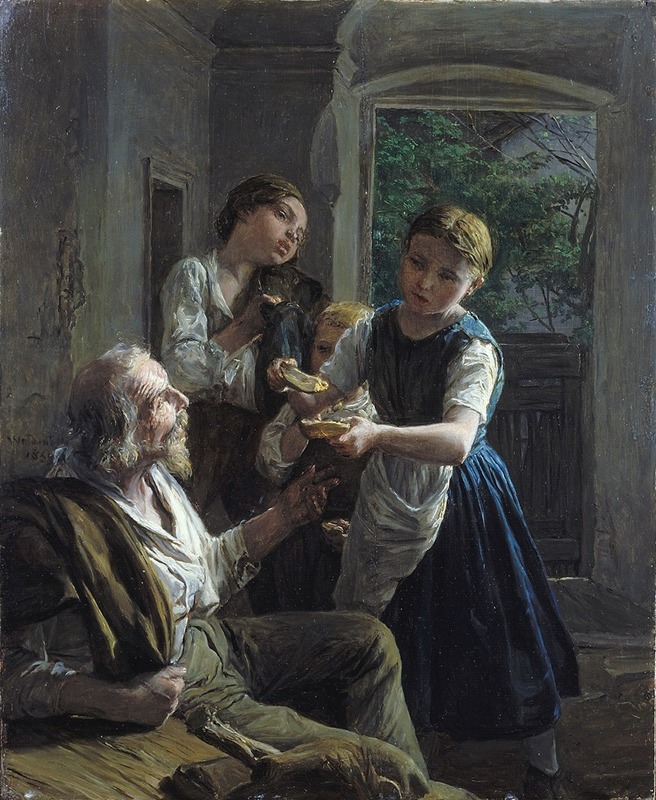
Beggar
A hand-painted replica of Ferdinand Georg Waldmüller’s masterpiece Beggar, meticulously crafted by professional artists to capture the true essence of the original. Each piece is created with museum-quality canvas and rare mineral pigments, carefully painted by experienced artists with delicate brushstrokes and rich, layered colors to perfectly recreate the texture of the original artwork. Unlike machine-printed reproductions, this hand-painted version brings the painting to life, infused with the artist’s emotions and skill in every stroke. Whether for personal collection or home decoration, it instantly elevates the artistic atmosphere of any space.
Ferdinand Georg Waldmüller (1793–1865) was an Austrian painter and one of the most prominent figures of the Biedermeier period in art. Known for his detailed and realistic depictions of everyday life, landscapes, and portraits, Waldmüller’s works often reflect the social and cultural atmosphere of 19th-century Austria. Among his many paintings, Beggar is one of his lesser-known works.
Beggar is a genre painting that exemplifies Waldmüller’s skill in portraying human figures with striking realism and emotional depth. The painting depicts a solitary beggar, dressed in tattered clothing, with a humble and downcast demeanor. The figure is rendered with meticulous attention to detail, highlighting the texture of the worn fabric and the weathered features of the individual. The background, though less detailed, provides a subtle context for the scene, often characteristic of Waldmüller’s ability to balance focus between the subject and its surroundings.
Waldmüller’s works, including Beggar, are often noted for their moral undertones and social commentary. Paintings like this one reflect the artist’s interest in the lives of ordinary people and the challenges faced by the lower classes during his time. While Waldmüller is best known for his idyllic rural scenes and portraits of the bourgeoisie, his genre paintings occasionally delve into themes of poverty and hardship, offering a glimpse into the less idealized aspects of 19th-century life.
The exact date of creation for Beggar is not widely documented, but it is consistent with Waldmüller’s broader body of work from the mid-19th century. During this period, the artist was deeply engaged in exploring the interplay between light, color, and texture, which is evident in the lifelike quality of the painting. Waldmüller’s mastery of light and shadow enhances the emotional resonance of the piece, drawing the viewer’s attention to the humanity of the subject.
Today, Waldmüller’s works are celebrated for their technical brilliance and their ability to capture the essence of Austrian society during the Biedermeier era. While Beggar may not be as widely recognized as some of his other paintings, it remains an important example of his commitment to realism and his empathetic portrayal of human subjects. Waldmüller’s legacy continues to influence the study of 19th-century European art, and his paintings are housed in various museums and collections around the world.
Further details about the provenance or current location of Beggar are not readily available in public records.


















